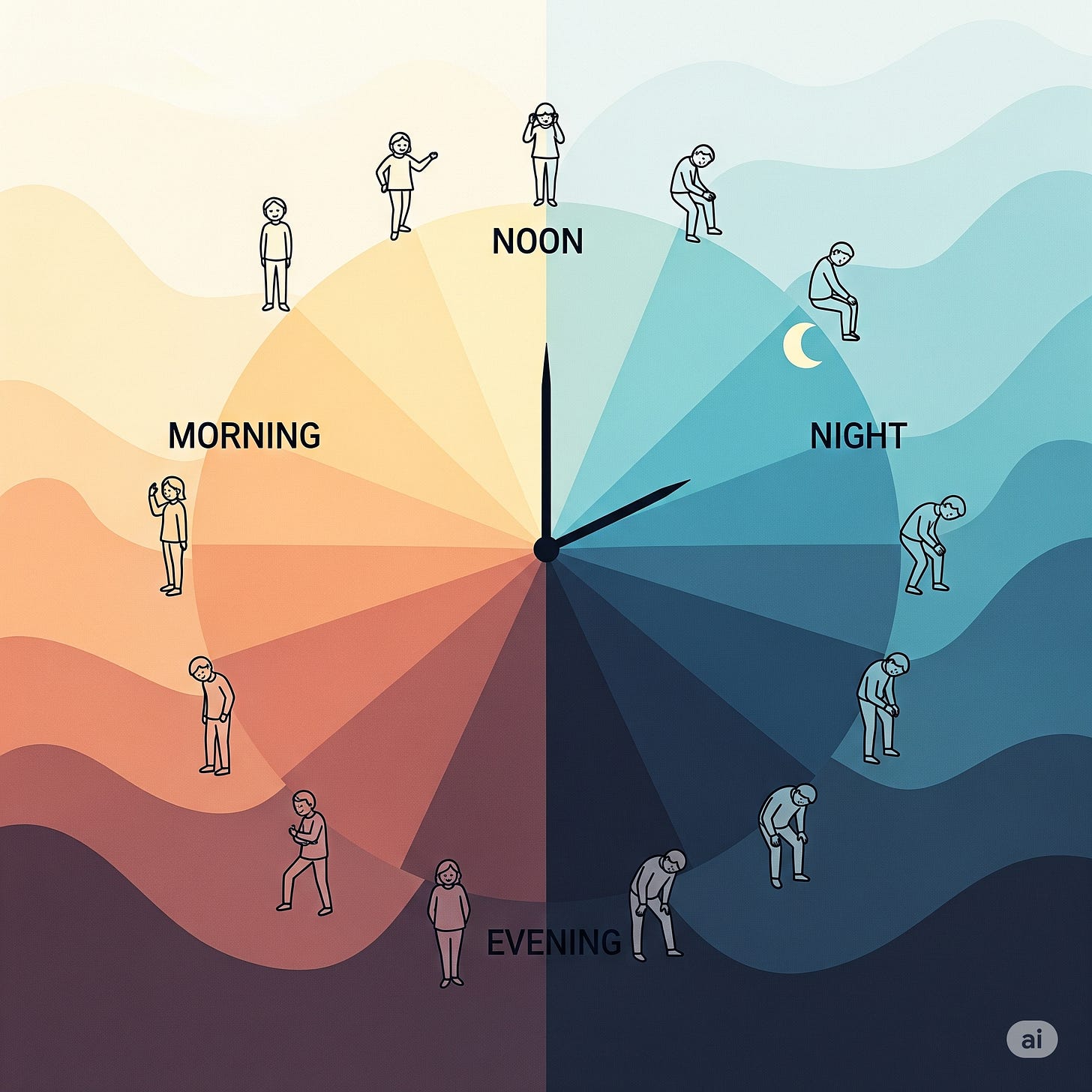Morning & Night: How Time of Day Shapes Mental Health
What nearly a million observations tell us about the timing of distress and relief
Does time itself influence how we feel?
A new study from University College London suggests that the answer is “yes”, and that knowing these daily patterns could help mental health professionals better understand clients’ symptoms and choose the right time for support.
Analyzing nearly one million data points, researchers explored how depression, anxiety, wellbeing, and loneliness shift across not just weeks and seasons, but the span of a single day. The findings showed that people consistently feel their best in the morning, with wellbeing declining through the day and reaching its lowest point around midnight.
While this pattern might seem intuitive, the evidence supporting it has been surprisingly sparse until now. Earlier studies often relied on limited or biased samples. By contrast, this study examined over 49,000 adults across two years using more robust models.
Not All Feelings Follow the Sun
Interestingly, not every mental health dimension shifted equally. Hedonic wellbeing (feelings of happiness, pleasure, and life satisfaction) and eudaimonic wellbeing (a deeper sense of meaning, purpose, and personal growth) showed the greatest variation across the day.
In other words, people’s emotional highs and lows, and their sense of life purpose, changed more dramatically than symptoms like loneliness or even anxiety.


